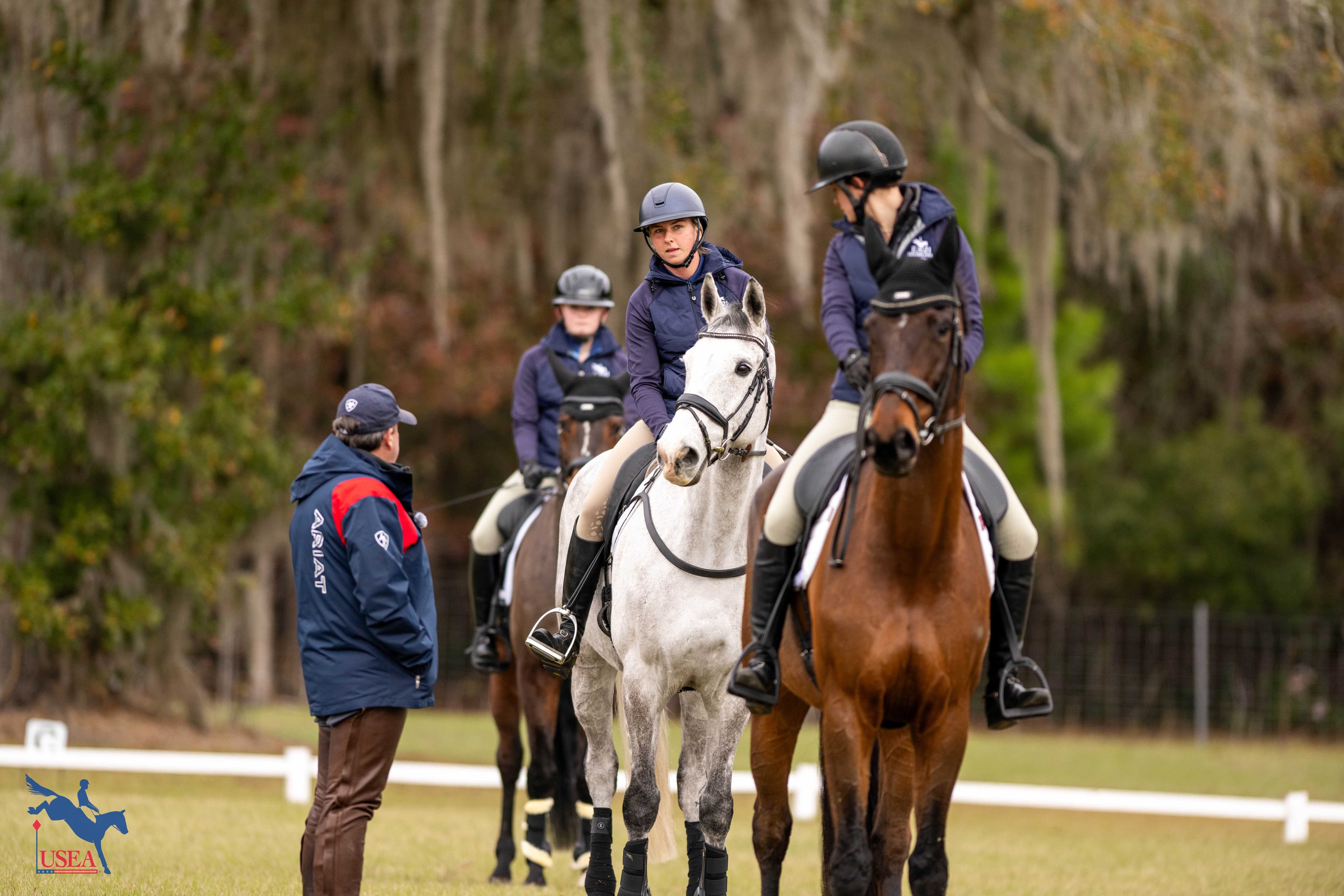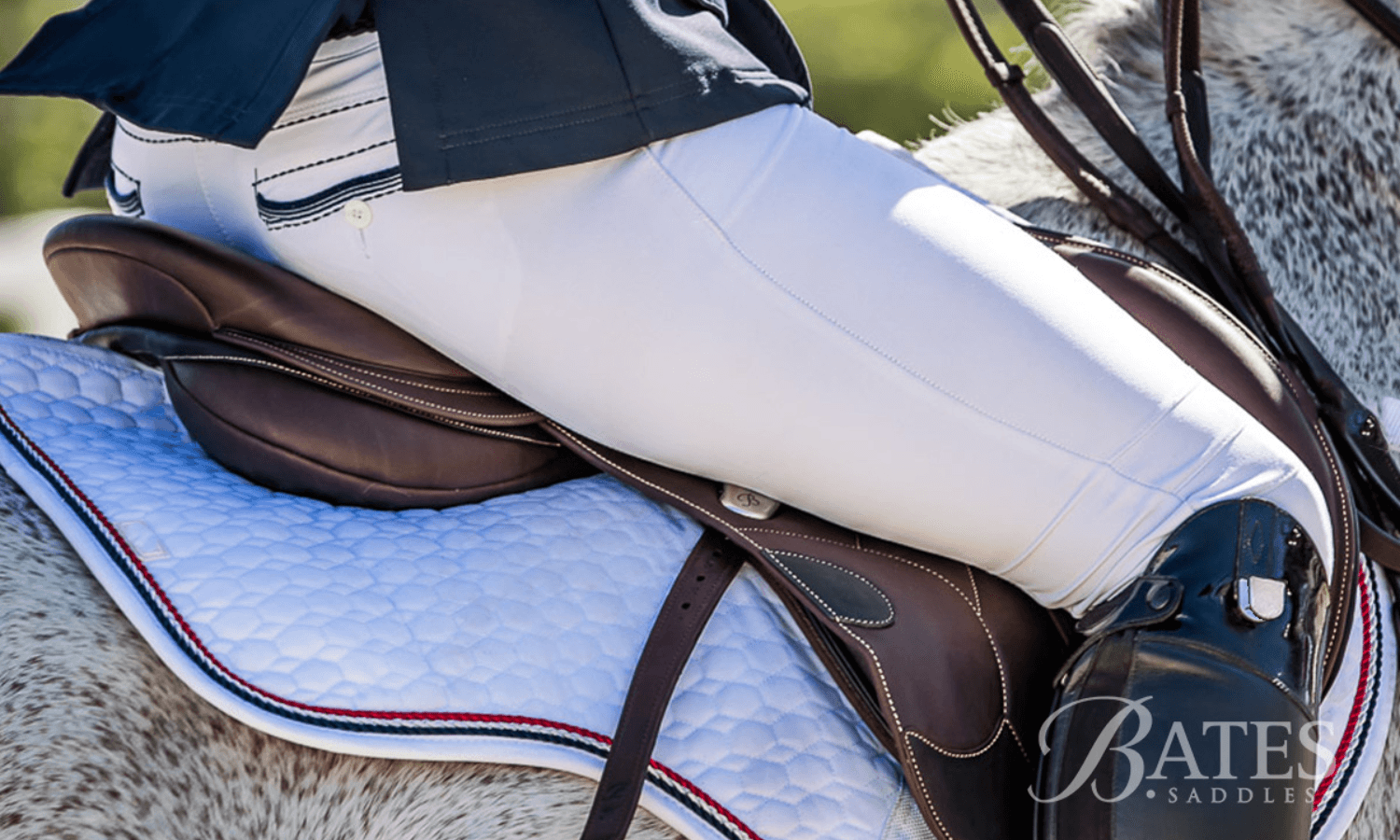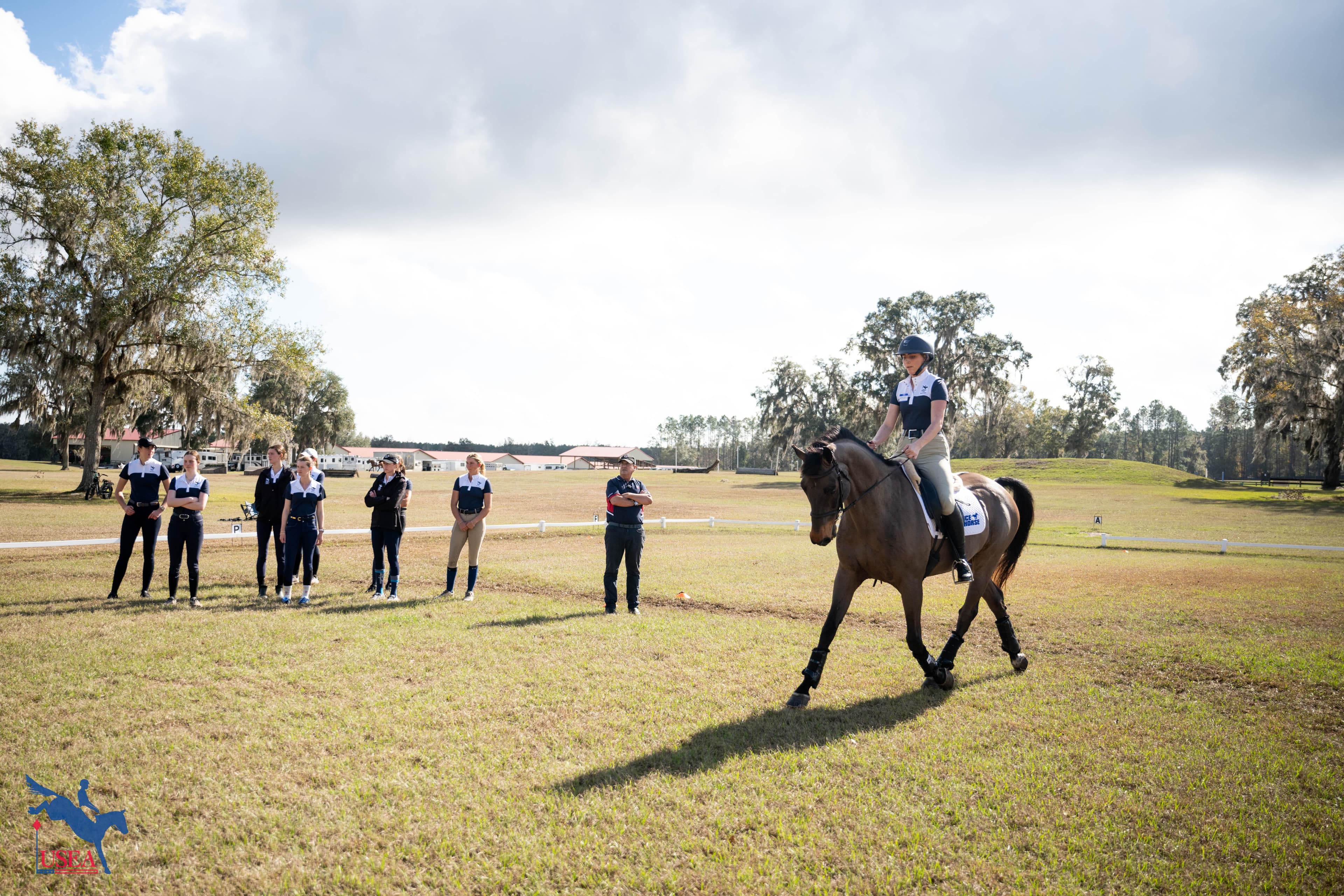Braitling Highlights Position and Intent Over Fences on Day 2 of EA21 Central Clinic
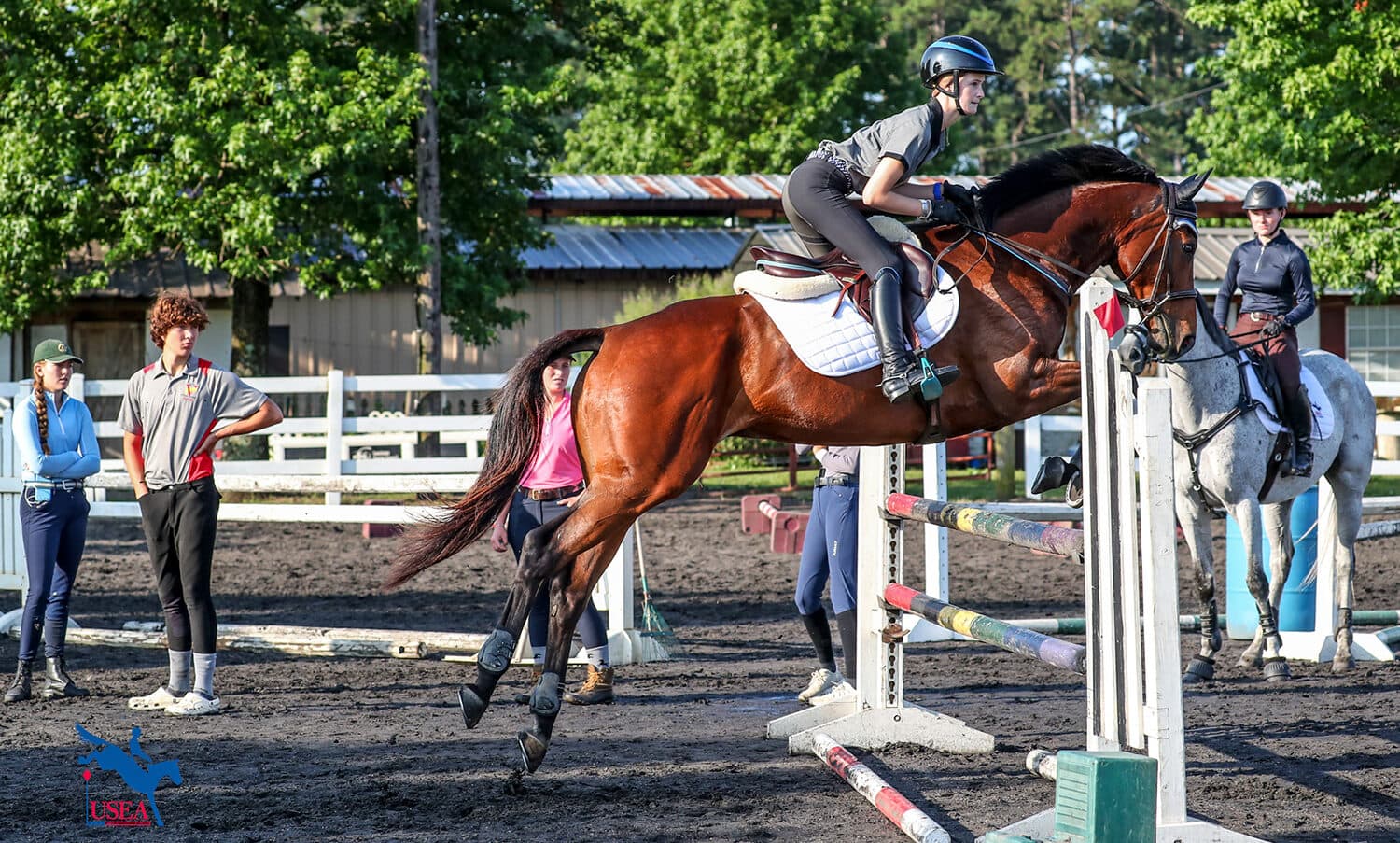
The USEA Emerging Athlete (EA21) Central Region Clinic resumed at Holly Hill Farm in Benton, Louisiana, on Sunday, June 11. Rebecca “Bec” Braitling, USEA Eventing Coaches Program (ECP) instructor, streamlined instruction with 12 pre-selected participants who may be vying for a spot at attending the national camp with EA21 Director of Coaching, David O’Connor in January 2024.
The Day 2 clinic extended the theme of fine tuning the basics and related this to the advanced effectiveness of show jumping connected to the Flatwork theories presented on Day 1. Position, balance, straightness, elasticity, body movement, reining, reaction time, and rhythm, all executed with planning and intent, enhanced purposeful communication between horse and rider teams within the show jumping arena.
Once again the riders were split into groups to make for efficiency with jumping and to fuel precise individual coaching of each rider’s skillset. Braitling interacted and worked with three groups of four over the course of an hour for each group. Participants not riding in that particular group observed the sessions which allowed insight similar to those that Sierra Fishell experienced. “Everybody struggles with adjustability” and is seeking to improve it in one way or another. Kelsey Seidel realized, “You have to be disciplined in every step of your ride–the quality of your canter or riding the horse that is beneath you. You must stay on top of everything.”
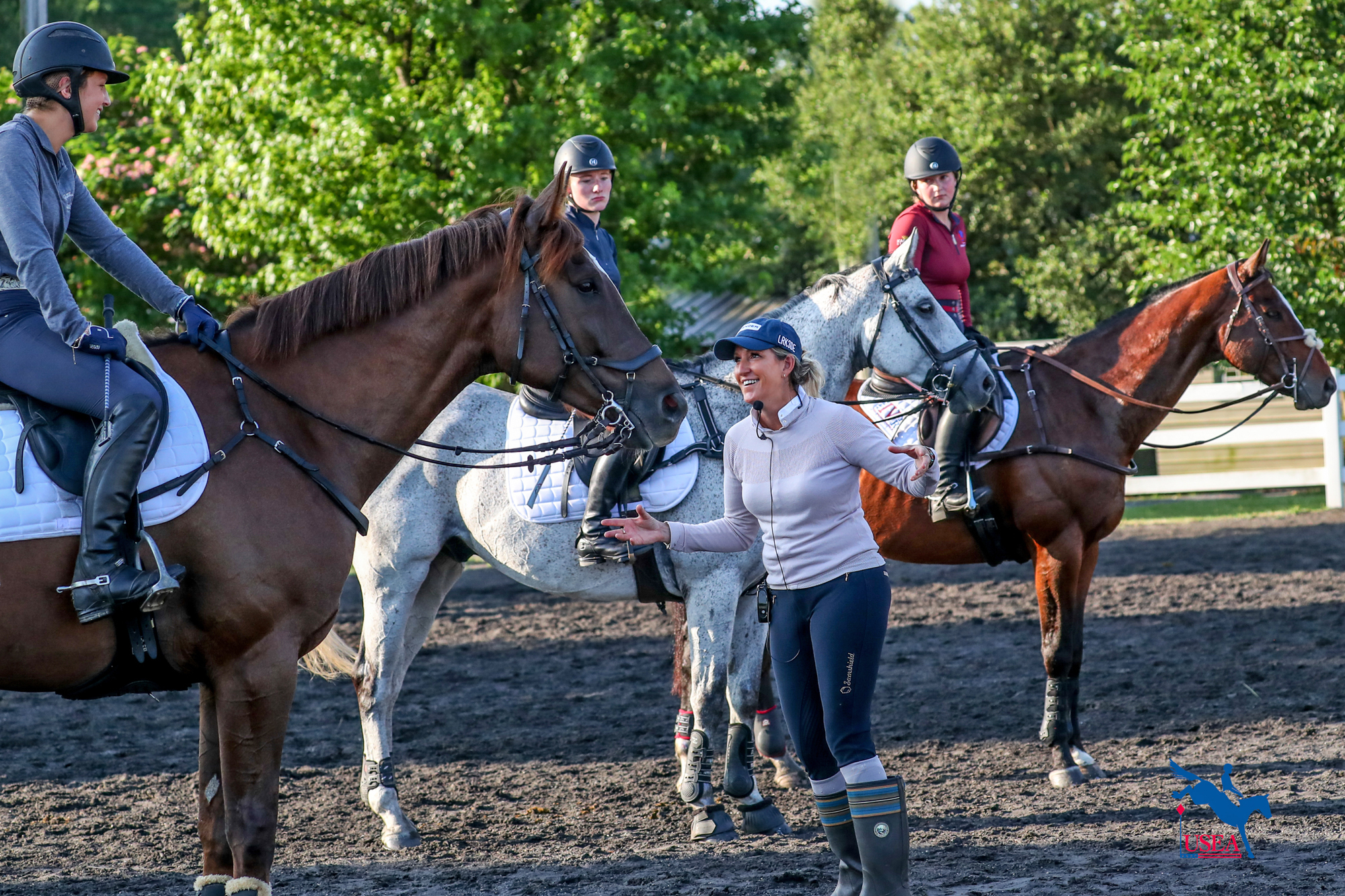
Braitling began each group session with riders warming up their horses as per usual. Then groups, one by one when their session time came, moved on to exercises with ground poles and cavaletti to improve the skills and movements that are used in many equestrian exercises. These skills are directly connected to the next phase, show jumping specifics.
When groups moved on to jumping verticals and oxers, Braitling emphasized that she designed the course strategically with the purposeful intent of improving the accuracy of turns, stride lengths, rhythm concepts, and all the above skills mentioned as a whole.
First, Braitling explained the travel pattern of the jump course. Then group 1 through 3 moved consecutively through the show jumping course. A common theme in each of these sessions seemed to be that there is a big difference between power and speed. Scarlett Peinado experienced an epiphany with this very thing saying, “I need to make sure I have enough energy from the start and not get confused between power and speed.”
Other theme dynamics implemented during jumping were using appropriate stride length and balance while moving forward without losing necessary relaxation. Camryn Chung reviewed her ride, saying, “I had to focus on being more tactful in my ride to the fence and not riding too forward”.
On the flip side, Sylvia Byers considers positioning as a big “take away” and will practice with her horse when she gets home since she rode a catch ride, Irish Jig Dancer, from Holly Hill, whom Braitling said should be “sainted”.
Moving throughout the course, Braitling encouraged riders to “get better at positioning, get stronger in the core, get better in balance and to stretch up”. Later, Fishell reiterated that, “going in with a positive attitude allows you to take constructive criticism,” as this is a huge part of the process of getting better. Braitling emphasized to all the riders that there are different kinds of canter so know them and then, “trust in the canter you have chosen and have the necessary energy to engage you as you are preparing for the jump.”
Braitling lectured before or after clinical experiences. These were presented as a way to preview what is to come or to relay important helpful information. For instance, after the dressage segment, a horse management lecture was presented at the barn. This lecture involved pulling out various tack in the form of bits and nosebands. This kind of thing is also presented at the National Camp so this was done as a preview of the things to come if riders are selected to attend the camp.
Stephanie Reimers, the coordinator of the group, and Braitling spoke with the participants in a casual setting about the importance of future planning. No matter if this means being on track for college, community college, or gaining an understanding of business savvy principles, there is a need for learning about the real world of paying taxes, meeting deadlines, managing time suitably, or setting short-term or long-term goals.
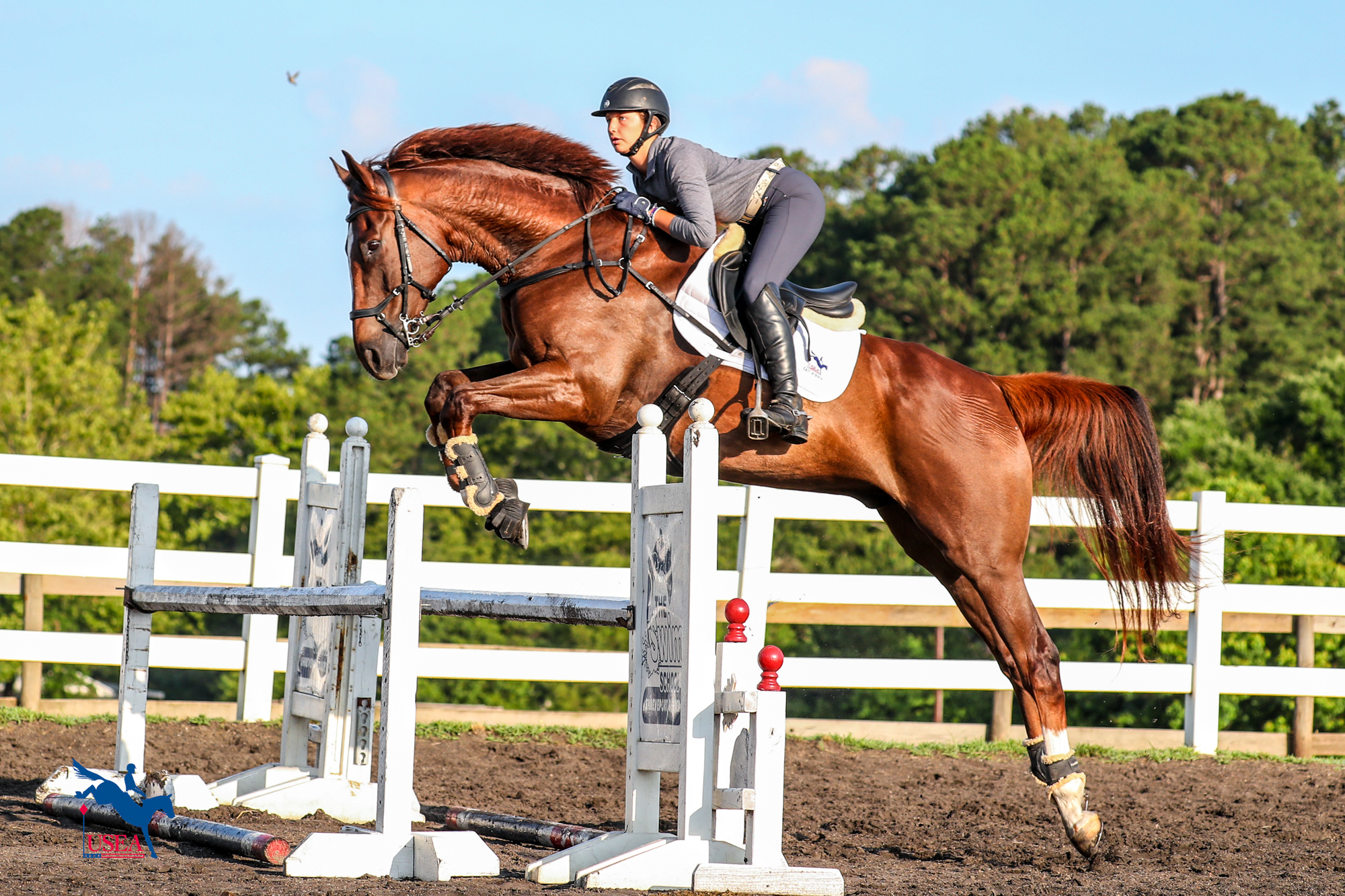
At the conclusion of the show jumping sessions, Braitling spoke on some of the key dynamics to consider of cross-country. She stressed several times over the course of the clinic that, “you should know your canters and choose the appropriate one for the fence you are approaching”. Always remember to be aware of the things you can control such as keeping “tools” in your toolbox to use when needed. One of which is to be properly prepared by checking out/previewing the course design by walking it.
If there is a question about something on the course, talk to officials. Ask if they can explain what is not understood. It is also good to be aware of how your horse will react to things. If timing is a concern choose to make up time on the back side of the fence. Don’t wait for something to happen but make use of the “tools” in your toolbox. Above all else trust your skill set. She culminated this clinic with high praise of the big improvements participants exhibited from last year and exclaimed, “Quality is very high now!”
Moving into the future, participants can reflect on the many individual instructions given to them that will help them to get better. Riders are looking forward to where this leads and are hopeful to be selected for the National Camp in early 2024 to learn even more.


























